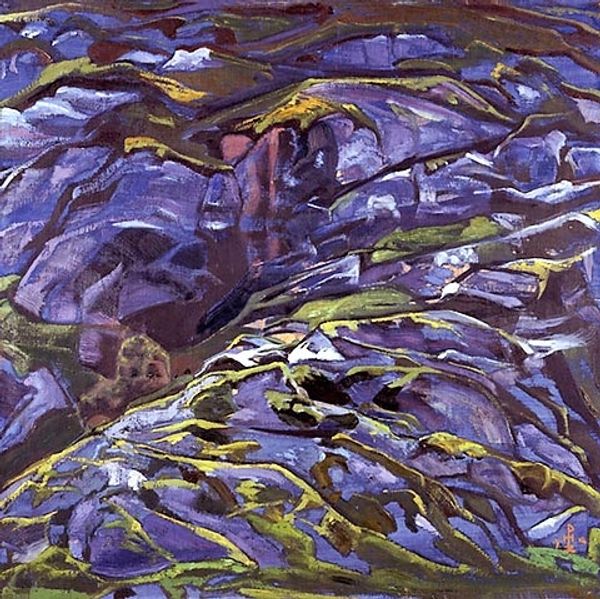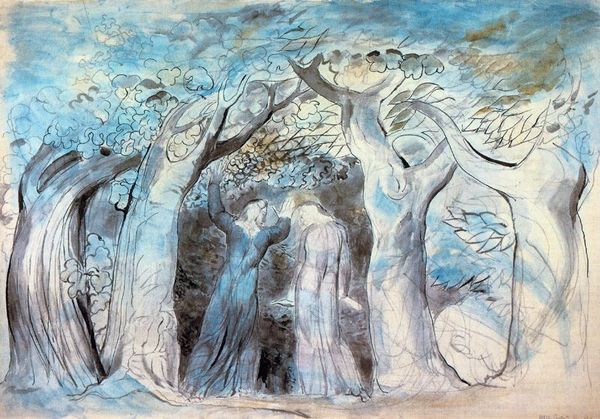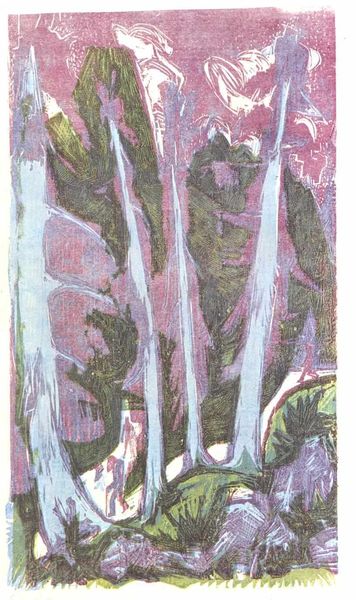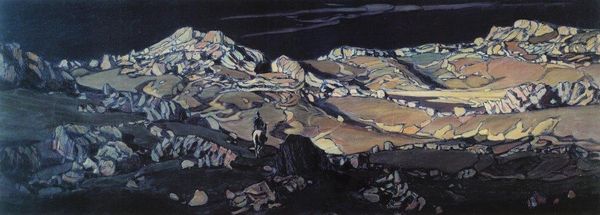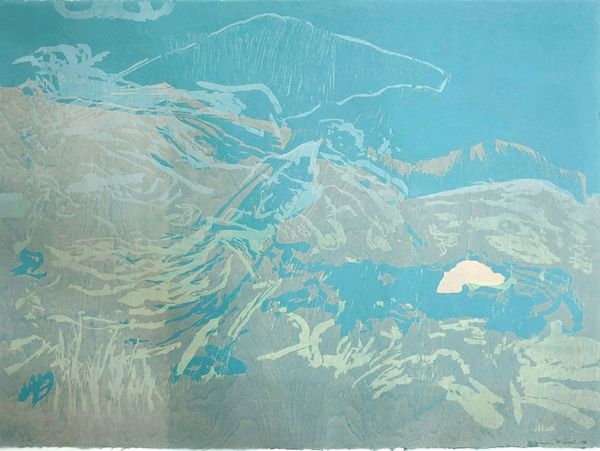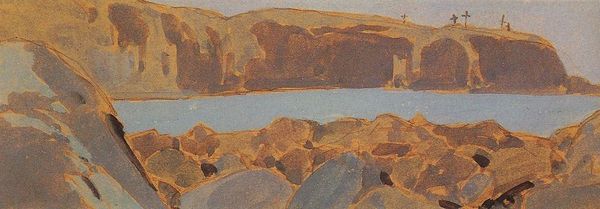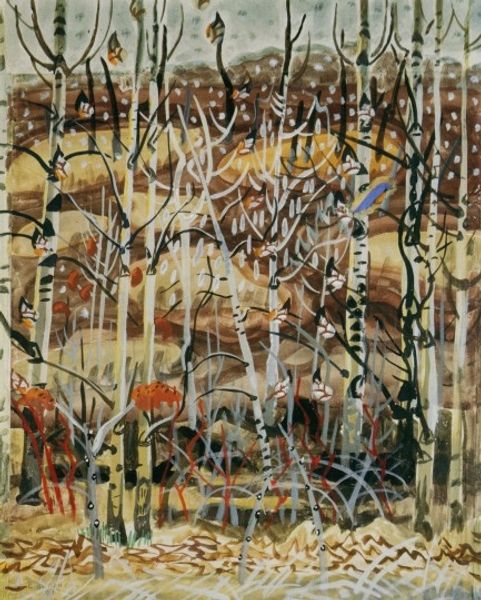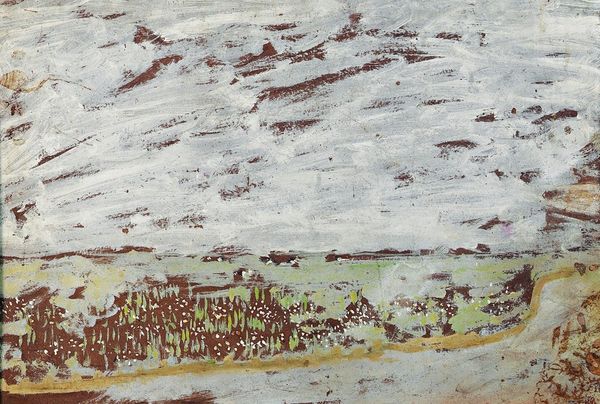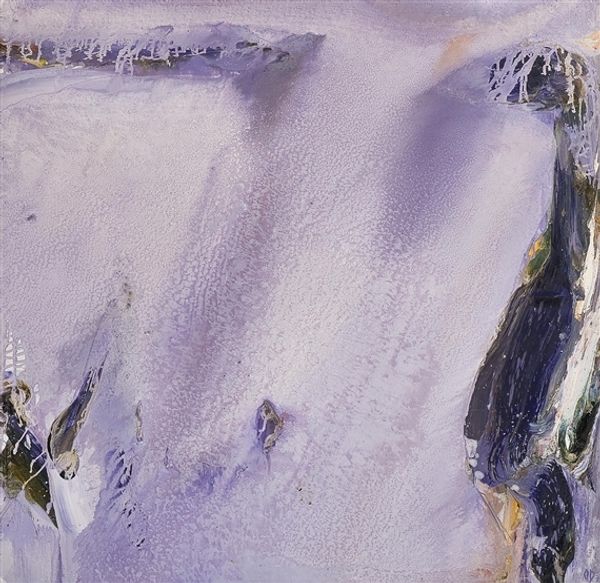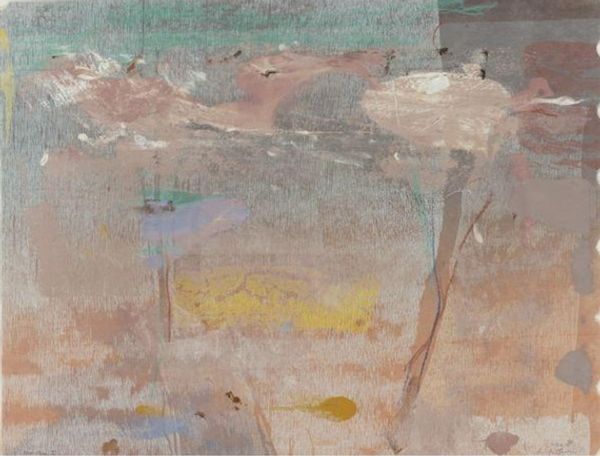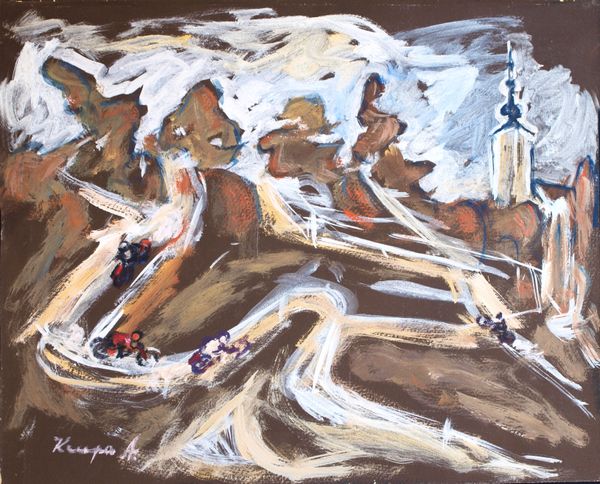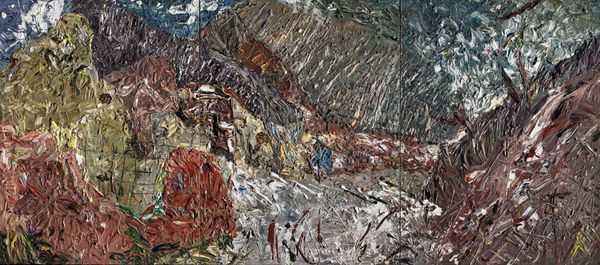
tempera, painting, oil-paint
#
tree
#
cliff
#
tempera
#
painting
#
oil-paint
#
landscape
#
possibly oil pastel
#
rock
#
mountain
#
expressionism
#
abstraction
#
abstract art
#
expressionist
Copyright: Public domain
Editor: So, this is "Karelian Landscape" by Nicholas Roerich, painted in 1918. It looks like oil paint or maybe tempera on canvas. It's incredibly textural...almost gritty. It’s such a departure from a traditional landscape. How do you interpret this work? Curator: Immediately, I’m drawn to the materiality. Notice how Roerich applies the paint – the visible brushstrokes, the impasto effects. Consider the accessibility of the materials he uses: readily available pigments and a simple canvas, yet elevated through his technique. Where do you see signs of this accessibility in other landscapes of the period? Editor: Well, some of the Impressionists were concerned with painting outdoors and capturing fleeting moments, and I know paint became more portable then. But this feels… rougher. Curator: Precisely. This “roughness” is key. It speaks to a breakdown of academic ideals. The landscape isn’t a picturesque scene to be passively consumed. Instead, we see an emphasis on the physicality of the paint itself, drawing attention to the act of creation. The materials themselves become the message. What impact would this have on other aspiring artists in that period? Editor: I guess it's saying art doesn’t have to be polished and perfect? It frees you up to focus on the experience of making, rather than just the finished product? Curator: Exactly. Think of this in terms of labor. Roerich isn’t trying to hide the "work" of art making. He's celebrating it, isn't he? Also, this period coincided with immense social upheaval; did Roerich deliberately challenge conventions to reflect this? Editor: That makes a lot of sense. I never thought about the “work” of art in that way. It's about highlighting the artistic labor through the very visible presence of the paint itself. Thanks! Curator: My pleasure. Viewing the art making process, material and labor opens up completely new avenues.
Comments
No comments
Be the first to comment and join the conversation on the ultimate creative platform.
